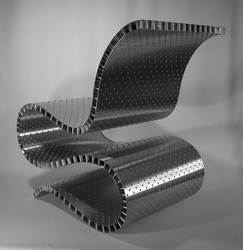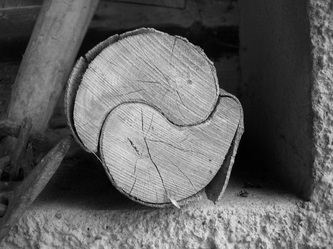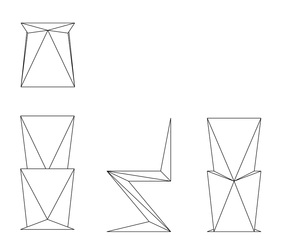The classic challenge of the chair is both structural and ergonomic: it must be light, yet support many times its own weight, and accommodate human form. In a Modernist sense, my furniture designs celebrate structure. In a Minimalist sense, they are nothing but structure. They are rich with allusion to historic precedent and have intuitive and visceral appeal by virtue of their sculptural forms.
YIN YANG LOUNGE CHAIR
2013. Stainless steel, aluminum, and acrylic, 30" x 19" x 30", 15" seat height, 50 pounds.
Exhibited in Art In Craft Media 2015.
Burchfield Penney Art Center, Buffalo, New York, United States. October 10, 2015–Sunday, January 24, 2016.
Exhibited in Art In Craft Media 2015.
Burchfield Penney Art Center, Buffalo, New York, United States. October 10, 2015–Sunday, January 24, 2016.
The elements of the Yin Yang Lounge Chair are reduced to the essential in order to reveal the subtle complexity of its structure with precision and clarity. Resolving this complexity in design leaves an austere elegance to the simplicity of its fabrication. The differing patterns of holes in two flat ribbons of stainless steel define the curvature of the chair. Once the holes are laser-cut, the sequential insertion of 4,844 screws induces the whiplash curve without formwork. If the screws are removed, the ribbons return to their flat state. The spacing of the screws varies in two ways simultaneously: between the ribbons, in order to induce the curve, expressed in the curvature of the ribbons; and along the curve, in response to the concentration of stress, expressed in the curvature of the diagonal rows of screws. The structure has a comfortable elasticity when one sits in the chair.
The form of this soaring double cantilever alludes to taijitu, the Chinese symbol for the concept of yin and yang: complementary forces interacting to form a whole greater than either separate part, which is embodied in the interdependence of the bound ribbons forming a structure that is exponentially stronger than either ribbon alone, as well as the alternating roles of tension and compression within this structure.
Yin Yang respectfully makes allusive reference to seminal cantilever chairs by Ludwig Mies van der Rohe, Alvar Aalto, Gerrit Rietveld, and Frank Gehry. Humans have made chairs for centuries; the challenge in designing a new one is to add something of interest to the conversation. Here, the daring structure is new and the form is refined. The digital design and fabrication techniques, as well as the aesthetic celebration of ubiquitous, off-the-shelf hardware, are contemporary. Yin Yang endeavors to make an informed re-interpretation of historic precedent.
The form of this soaring double cantilever alludes to taijitu, the Chinese symbol for the concept of yin and yang: complementary forces interacting to form a whole greater than either separate part, which is embodied in the interdependence of the bound ribbons forming a structure that is exponentially stronger than either ribbon alone, as well as the alternating roles of tension and compression within this structure.
Yin Yang respectfully makes allusive reference to seminal cantilever chairs by Ludwig Mies van der Rohe, Alvar Aalto, Gerrit Rietveld, and Frank Gehry. Humans have made chairs for centuries; the challenge in designing a new one is to add something of interest to the conversation. Here, the daring structure is new and the form is refined. The digital design and fabrication techniques, as well as the aesthetic celebration of ubiquitous, off-the-shelf hardware, are contemporary. Yin Yang endeavors to make an informed re-interpretation of historic precedent.
HOMAGE CHAIR
Aluminum sheet. 2006
A lightweight and exceptionally strong tribute to Gehrit Rietveld's 1934, Zig Zag Chair.
A lightweight and exceptionally strong tribute to Gehrit Rietveld's 1934, Zig Zag Chair.










